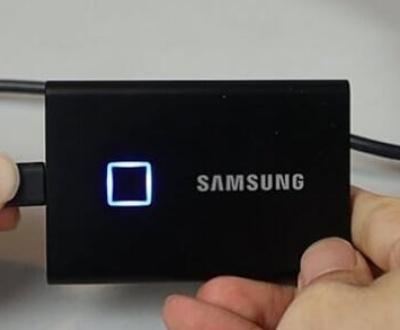Seagate external hard drives have long been known for their reliability, large storage capacities, and ease of use. Whether you use one for backups, file transfers, or as an extension of your computer’s storage, there may come a time when you need to erase it. Perhaps you’re selling it, troubleshooting an issue, or just want to start fresh. Whatever your reason, erasing your Seagate external hard drive is a straightforward process if you know the steps.
Why Would You Want to Erase a Seagate External Hard Drive?
Erasing a hard drive isn’t something you do lightly. Here are some common reasons why someone might choose to wipe their Seagate drive clean:

1. Preparing to Sell or Give Away the Drive
If you’re planning to part with your drive, you’ll want to make sure none of your personal files can be recovered. A simple deletion doesn’t suffice data can still be recovered with the right tools unless the drive is fully erased.
2. Starting Fresh
Sometimes a drive gets cluttered with outdated files, random folders, or software leftovers. Wiping it gives you a blank canvas to work with.
3. Fixing Errors or File System Corruption
Drives can develop bad sectors or file system errors that simple file deletion won’t fix. Erasing and reformatting can help resolve these issues.
4. Changing File System Format
Switching from Windows to Mac, or vice versa? You might need to reformat your drive to ensure compatibility.
5. Improving Drive Performance
Old drives can benefit from a full reset, especially if used for demanding tasks like video editing or gaming.
Important Note Before You Begin
Back up everything. Once you erase the drive, the data is gone (at least functionally, and in the case of secure erasing—gone permanently). Before proceeding, double-check that anything important has been saved elsewhere.
Understanding Drive Erasure vs. Formatting
Many people confuse erasing with formatting. Here’s the difference:
Formatting generally prepares the drive for use with a specific file system (like NTFS, exFAT, or HFS+). It may or may not erase the data, depending on the type of format you choose.
Erasing often includes formatting but may also refer to securely wiping the data so it cannot be recovered.
If you just want to change the format and don’t care about data security, a quick format might suffice. If you want a truly clean slate, go for a full erase with secure overwrite options.
How to Erase a Seagate External Hard Drive on Windows
Step 1: Connect the Drive
Plug your Seagate external hard drive into your Windows PC using a USB cable. Wait a few seconds for it to be detected.
Step 2: Open Disk Management
Press Win + X and select Disk Management.
Locate your Seagate drive in the list. Be sure you’re selecting the external drive and not your main internal disk.
Step 3: Delete Existing Partitions (Optional)
If your drive has multiple partitions:
Right-click each partition and choose Delete Volume.
Confirm your decision.
This step removes the structure of your files, making room for a clean setup.
Step 4: Create a New Volume
Right-click on the Unallocated space.
Select New Simple Volume.
Follow the wizard:
Choose the size.
Assign a drive letter.
Choose a file system (NTFS for Windows-only use, exFAT for cross-platform compatibility).
Step 5: Perform a Full Format
When prompted:
Uncheck Quick Format for a full wipe (slower but more thorough).
Choose NTFS or exFAT depending on use.
Click Next and then Finish.
Your drive will be formatted and erased.
How to Erase a Seagate External Hard Drive on macOS
Step 1: Plug in the Drive
Use the USB or Thunderbolt cable to connect the drive to your Mac. Wait for it to show up on the desktop or in Finder.
Step 2: Open Disk Utility
Go to Applications > Utilities > Disk Utility.
Select your Seagate drive from the left sidebar.
Make sure you select the correct drive—not a partition, but the root of the drive itself.
Step 3: Erase the Drive
Click the Erase button at the top of the Disk Utility window.
Choose the following:
Name: Any name you prefer.
Format:
Choose APFS for macOS-only use.
Choose exFAT for compatibility with Windows and Mac.
Choose Mac OS Extended (Journaled) for older macOS versions.
Scheme: Select GUID Partition Map.
Click Erase to begin the process.
Step 4: Optional – Secure Erase
If you’re using an older version of macOS (pre-Catalina), you may have access to secure erase options:
Click Security Options when erasing.
Drag the slider to increase the number of overwrite passes (the more, the safer).
Using Seagate’s Tools for Erasure
Seagate offers tools like Seagate Dashboard and Toolkit that include basic drive management options. However, these tools don’t always include advanced secure erase features. Still, they can be helpful for basic reformatting and resetting:
Seagate Toolkit
Download and install Seagate Toolkit from Seagate’s official website.
Launch the program and select your drive.
Look for Reset or Format options.
Choose your preferences and start the process.
This tool is user-friendly but may not offer deep erasure for sensitive data.
Using Third-Party Tools for Secure Erase
If you want to make sure your data is really gone and unrecoverable, consider using a third-party tool.
1. DBAN (Darik’s Boot and Nuke) – Windows/Linux
Create a bootable DBAN USB.
Boot your PC from the USB drive.
Select your Seagate drive and choose a secure erase method (e.g., DoD Short, Gutmann).
Let the tool overwrite every sector of the drive.
Note: DBAN doesn’t work with USB external drives. You may need to remove the drive from its enclosure and connect it via SATA.
2. CCleaner – Windows
Install CCleaner.
Go to Tools > Drive Wiper.
Choose the Seagate drive.
Select how many overwrite passes (1. 3. 7. or 35).
Click Wipe.
3. Eraser – Windows
Free and open-source.
Allows scheduled and one-time secure wipes.
Supports multiple erasure methods.
Erasing a Seagate external hard drive is a critical step when repurposing, selling, or troubleshooting the device. With built-in OS tools, Seagate utilities, and powerful third-party software, you can easily wipe your drive clean—whether you’re after a simple format or a deep, secure erase.
The key is to first determine your goal: Do you just need a clean slate, or are you protecting sensitive data? Once you know that, the steps become easy. Whether you’re using Windows or Mac, you’re only a few clicks away from a refreshed drive ready for its next adventure.
About us and this blog
Panda Assistant is built on the latest data recovery algorithms, ensuring that no file is too damaged, too lost, or too corrupted to be recovered.
Request a free quote
We believe that data recovery shouldn’t be a daunting task. That’s why we’ve designed Panda Assistant to be as easy to use as it is powerful. With a few clicks, you can initiate a scan, preview recoverable files, and restore your data all within a matter of minutes.
Subscribe to our newsletter!
More from our blog
See all postsRecent Posts
- How to recover deleted voicemail samsung? 2025-04-22
- Samsung portable ssd t5 online recovery 2025-04-22
- Fix western digital external hard drive 2025-04-22

 Try lt Free
Try lt Free Recovery success rate of up to
Recovery success rate of up to









